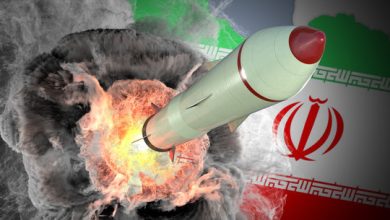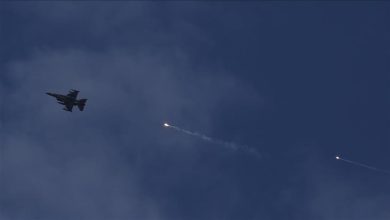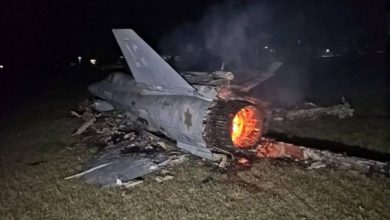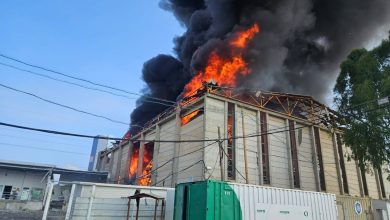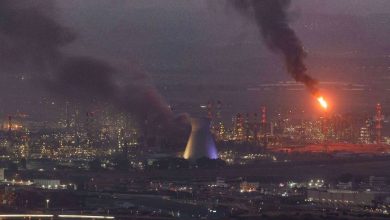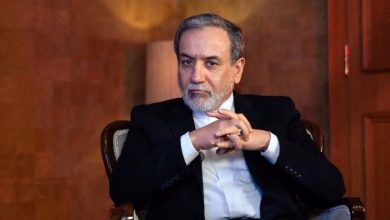Iranian Intelligence Penetrates Israel’s Nuclear Stronghold: Implications and Significance Unveiled
Iran's Intelligence Minister Esmail Khatib announced on Sunday that the nation has acquired a considerable collection of documents related to Israel's nuclear facilities. According to Khatib, this acquisition is expected to bolster Iran's offensive capabilities.
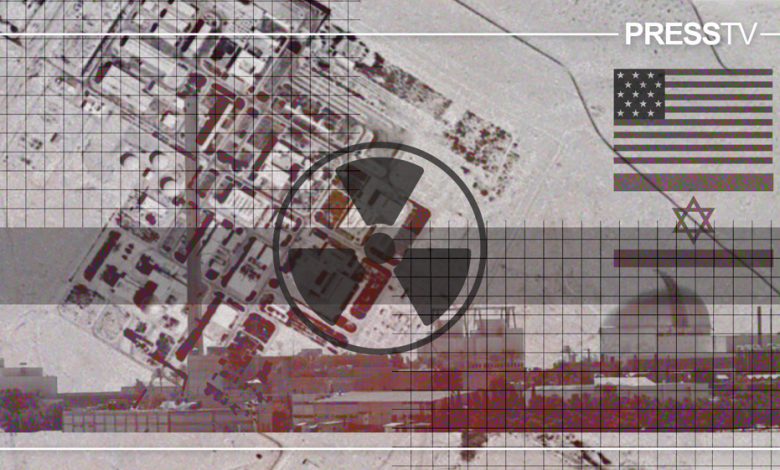
Khatib announced that a “comprehensive and complex” operation was conducted within the occupied territories, successfully transferring “strategic, operational, and scientific information” to the Islamic Republic.
Iran has reportedly acquired documents from Israel concerning its nuclear facilities, according to remarks made by Khatib to the Islamic Republic of Iran Broadcasting (IRIB), shortly after the disclosures came to light.
Strategic documents and records from the regime are poised to bolster the nation’s offensive capabilities significantly.
He further emphasized that the methods of transmission are secure and will not be disclosed in the near future. However, he noted that certain documents will be made available to the public in the coming days.
The documents have been obtained with the help of informants operating on the ground and have been discreetly transported to Iran. According to reports, a portion of these files is set to be released to the public in the forthcoming days.
The process through which the confidential documents were obtained remains under investigation as authorities scrutinize the details surrounding the acquisition.
Sources with knowledge of the situation reported to IRIB on Saturday that the intelligence breach represents one of the most substantial setbacks for the occupying Israeli regime.
Sources have disclosed that despite the operation to acquire the documents having occurred some time ago, the extensive volume of materials, coupled with the requirement to securely transport them into Iran, warranted a media blackout to guarantee their safe delivery to designated secure locations.
Officials have reported that the substantial volume of documents, accompanied by numerous images and videos, has necessitated a considerable amount of time for thorough examination.
Sources disclosed to IRIB that the apprehension of Israeli settlers, who were allegedly offering services to Iran, transpired only after crucial documents had been securely moved out of the occupied Palestinian territories.
The specific contents of the documents have not been publicly revealed.
The operation successfully enlisted the support of several Israeli settlers and led to the acquisition of thousands of documents, images, and videos related to Israeli nuclear initiatives and facilities. Among the sites included in these materials were the Negev Nuclear Research Center, also known as Dimona, and other critical locations.
The disclosure follows closely on the heels of an announcement made fewer than three weeks ago by Israeli authorities, regarding the apprehension of two individuals suspected of engaging in alleged “security crimes” for Iran.
In a joint announcement released on May 20, Israeli police in collaboration with the Shin Bet agency reported the detention of Roy Mizrahi and Almog Atias, both 25, hailing from Nesher. The individuals were apprehended in late April on suspicions of engaging in intelligence-gathering activities on behalf of Iran.
The intricacies of the recent document transfer operation remain uncertain, with ambiguity surrounding the specific actions taken or the direct involvement of the parties in question. The Israeli authorities have refrained from disclosing details, including the objectives and methods of the operation, citing security concerns.
A February article by Yossi Melman in The Economist offers a deeper insight into Israeli settlers’ engagement in espionage activities for Iran, under the headline, “Why are so many Israeli Jews spying for Iran?”
The article sheds light on an extraordinary increase in the number of Israeli settlers reportedly engaging in espionage activities for Tehran.
According to information from the Shin Bet, 39 Israelis were apprehended in 2024 on allegations of espionage for Iran, which is said to be merely the surface of the issue. Reports suggest that hundreds have been recruited since the latter part of 2022, as indicated by an Israeli internal security source.
Reports indicate that individuals from a wide range of backgrounds—spanning Jewish and Arab communities, and including both religious and secular members, as well as a broad age range and gender diversity—have been recruited, allegedly through social media channels or while traveling.
The article highlights that Israel has traditionally taken pride in its robust counter-espionage capabilities and internal unity, which have historically hindered Arab states from effectively recruiting Israeli citizens during periods of conflict. However, there are indications that this dynamic may be changing.
The increase in anti-regime operations is widely seen as indicative of an imminent breakdown within Israeli settler society. This signals a fracturing of the settler-colonial identity and an escalating mistrust towards the occupying powers against the backdrop of the continuing war in Gaza, perceived by many as genocidal.
Melman cited a former Shin Bet official who emphasized the necessity of discouraging any collaboration with the nation’s most dangerous adversaries, warning that failure to do so could escalate into a widespread national crisis.
What contents are anticipated to be within the documents?
Despite the ongoing secrecy surrounding the content of the documents, insights can be gleaned from statements made by Iranian officials to date.
Iran’s Intelligence Minister, Khatib, emphasized connections to Israeli nuclear sites, specifically suggesting the Dimona facility, officially named the Negev Nuclear Research Center, situated in the Negev Desert near Dimona city.
The site is generally regarded as the focal point of what is suspected to be Israel’s nuclear weapons program. However, the International Atomic Energy Agency (IAEA) is unable to inspect the facility because Israel is not a participant in the Nuclear Non-Proliferation Treaty (NPT) and has not publicly disclosed the complete function of the Dimona installation.
Iran and other regional nations, all signatories of the Non-Proliferation Treaty (NPT), have long urged the United Nations and the international community to compel Israel to join the treaty.
The Dimona facility is widely believed to contain a plutonium-producing nuclear reactor, originally provided by France in the late 1950s, and is thought to play a role in the production of material suitable for nuclear weapons.
In 1986, Mordechai Vanunu, a former technician at the facility, revealed substantial and decisive evidence of Israel’s covert nuclear weapons program, including photographs of bomb components.
The documents acquired by Iran could offer a more profound understanding of this clandestine site, potential subterranean enhancements, structural characteristics, and device specifications, along with a multitude of other valuable technical details.
This intelligence, whether it pertains solely to the Dimona facility or includes other undisclosed locations, holds potential significance for Iran, various regional authorities, the International Atomic Energy Agency (IAEA), and other global entities.
Khatib highlighted that the documents are expected to bolster Iran’s offensive capabilities. This suggests that they contain valuable information for the Iranian military, including potential targets for missiles and drones in the event of an escalation in regional tensions.
Moreover, the documents could potentially disclose insights into Israel’s military prowess and might provide clarity on the Vela incident in the Indian Ocean in 1979, an event many analysts believe was a covert Israeli nuclear weapons test.
The revelations contained within the documents have the potential to undermine Israel’s longstanding policy of nuclear ambiguity, a strategy employed since the 1960s that involves neither confirming nor denying its nuclear capabilities.
**Israel’s Covert Nuclear Program: An Overview**
Israel’s nuclear program is shrouded in secrecy and has long been the subject of speculation and analysis. Established during the early decades of the state’s existence, Israel embarked on developing its nuclear capabilities with a primary focus on maintaining a strategic advantage in the region. The program is believed to have begun in the late 1940s and gained momentum in the 1950s and 1960s with the assistance of foreign partnerships and covert operations. The Dimona nuclear facility in the Negev Desert is often cited as a central component of Israel’s nuclear efforts. Despite widespread belief about Israel’s nuclear arsenal, the country maintains a policy of ambiguity, neither confirming nor denying the existence of its nuclear weapons, citing national security concerns.
Israel clandestinely initiated its nuclear program in 1952, receiving significant technological assistance from France and the United States. Notably, these are the same countries that have been particularly outspoken in their criticism of Iran’s nuclear pursuits, which Iran maintains are for peaceful purposes.
According to reports, Tel Aviv allegedly initiated the development of its first nuclear weapons program approximately between 1967 and 1968. Following this initial phase, production purportedly advanced at a significant pace, conducted under strict secrecy and largely evading international oversight.
In 1986, Mordechai Vanunu emerged as the initial whistleblower to shed light on the clandestine arsenal of the regime. His actions led to his conviction for treason two years later, resulting in an 18-year prison sentence. This served as a formidable caution to those contemplating the exposure of Israel’s nuclear secrets.
In December 2013, ex-Knesset member Avraham Burg publicly acknowledged that Israel holds both nuclear and chemical weapons, breaking a long-standing silence on the matter.
He characterized the regime’s purported “nuclear ambiguity” as both antiquated and immature—a daring position that not only attracted significant criticism but also led to legal challenges for him.
France and the United States played pivotal roles in the development of Israel’s nuclear program. The country’s reserve of weapons-grade fissile material began with France in the 1960s and was further augmented by the United States by the end of that decade.
The United States’ support has effectively protected Israel from facing consequences. In 1968, CIA Director Richard Helms disclosed to President Lyndon Johnson that Israel had successfully developed nuclear weapons.
In the subsequent year, during discussions between Richard Nixon and Israeli Prime Minister Golda Meir, a consensus was reached that Israel would be exempt from signing the Nuclear Non-Proliferation Treaty (NPT), which had become available for signature only a few months prior.
Israel has yet to become a signatory to the Non-Proliferation Treaty (NPT), consistently dismissing international appeals to engage with the global arms control framework and declining inspections by the United Nations nuclear oversight body.
In recent months, Israel has significantly intensified its rhetoric, issuing threats to target Iran’s nuclear sites. These facilities are characterized by their peaceful nature and are closely monitored by the United Nations nuclear agency.
Iran’s recent procurement of confidential documents pertaining to Israel’s secretive nuclear weapons program has left the nation significantly exposed and precarious. The disclosure has unraveled long-held secrets, casting doubt and uncertainty over its future trajectory.

